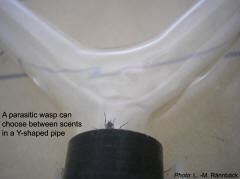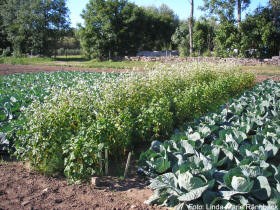Project manager: Birgitta Rämert, Department of Plant Protection Biology, SLU
In this project we aim to develop a cropping system that provides the conditions to increase and then maintain high populations of natural enemies within the farm, while at the same time interrupting the development of pest populations through introduction of a targeted crop rotation. This will create good synergies for control of pest populations, increased production reliability and better economics for vegetable growers.
In order to increase and maintain high populations of natural enemies, there must be undisturbed habitats within the cultivated landscape that provide them with good access to food, shelter and overwintering sites.
Biological control by site-specific natural enemies has always been most successful in perennial crop systems. By imitating a perennial cropping system for the parasitic wasp through a crop rotation consisting of cabbage and onion, the wasp is provided with continuous access to its host Delia spp. from year to year. While pest populations are being disrupted annually through a new crop being cultivated, in addition the pest insect (Delia spp.) cannot multiply. Vegetable cultures will be co-cropped with strips of perennial flowers that act as a good source of nectar for the parasitic wasps. These strips of flowers will also act as good overwintering sites for other natural enemies of the pests. The choice of plants will be based on the results of behavioural and electrophysiological experiments to determine the attraction of the parasitic wasp species to colour and scent.
The knowledge we acquire in this project will also be very worthwhile in designing biological control programmes for other cropping systems and pests.
The main part of this project is financed by Formas, the Swedish Research Council for Environment, Agricultural Sciences and Spatial Planning.


